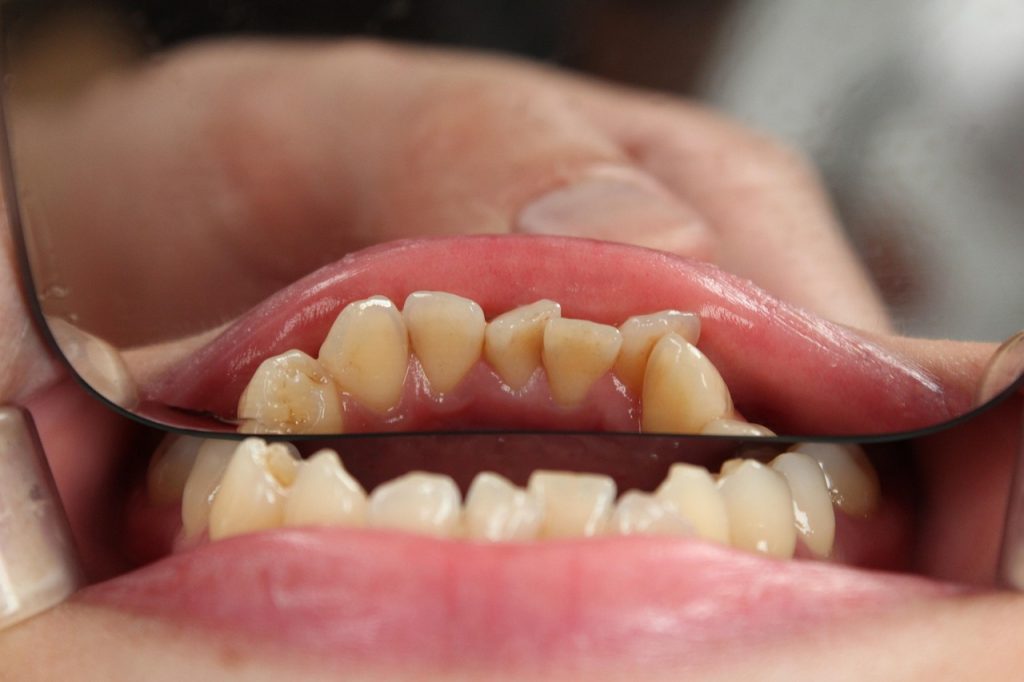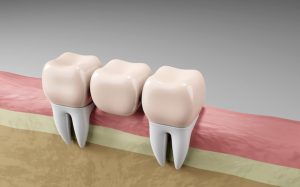Plaque and tartar are two common terms often discussed during routine dental checkups, especially when addressing gum health and oral hygiene. But what exactly do they mean, and how do they differ? Understanding the difference between plaque and tartar is important for preventing gum disease, tooth decay, and long-term oral health issues.
This blog explains the key differences between plaque vs tartar, including how they form, their signs and symptoms, related risks, prevention strategies, and available treatment options.
Table of Contents
Plaque vs Tartar: Key Differences Explained
Here’s the difference between the two:
Dental Plaque
Plaque is a soft, sticky biofilm that forms on the surface of teeth. It is made up of saliva, bacteria, and food particles.
Plaque formation is a multi-step process consisting of four stages:
- Bacterial attachment to the tooth surface or other parts of the oral cavity
- Microcolony formation, where bacteria multiply within 24–48 hours
- Biofilm maturation
- Bacterial detachment, allowing spread to other areas
- Inflammation of the gums can appear within 7–14 days of plaque accumulation.
Key features of dental plaque:
- It forms as quickly as 24 hours
- A diet rich in sugars and carbohydrates promotes its formation
- Bacterial colonies produce acids that lower oral pH, leading to cavities and gum disease
- It can appear as a yellowish film over time
Dental Tartar (Calculus)
Tartar is a hardened, mineralized form of plaque that forms when plaque remains on the teeth and isn’t removed through regular brushing and flossing. When plaque is not cleaned, it absorbs minerals from saliva and solidifies. Formally, tartar is called calculus and is categorized as either supragingival (above the gum) or subgingival (below the gum line).
Key features of dental tartar:
- Hard and crusty in texture
- Deposits on tooth crowns appear yellowish; root surface deposits are dark brown or black
- Commonly found along periodontal pockets and contributes to the evolution of periodontal disease.
Plaque vs Tartar: Signs and Symptoms
Plaque develops quickly, but symptoms may take time to appear. Tartar, however, is visible as hardened white or brown deposits on the teeth.
Signs of Plaque Accumulation:
- Teeth feel fuzzy or rough
- Mild bad breath
- Gum bleeding
- Slight redness or inflammation around the tooth
Signs of Tartar Formation:
- Supragingival calculus: White or yellowish, most frequently seen on the back of the lower front teeth
- Subgingival calculus: Black or greenish-black, brittle with a glass-like texture, usually under swollen gums
- Persistent bad breath
- Frequent gum bleeding
- Gum recession and exposed roots
- Tooth sensitivity (hot/cold)
- Tooth mobility in advanced cases
The amount and size of tartar deposits vary based on personal hygiene, diet, and tobacco use.
Plaque vs Tartar: Which is More Harmful?
Both plaque and tartar are harmful to oral health, but they differ in severity. Plaque develops quickly and is the early stage of buildup; it can typically be removed through regular brushing and flossing. However, if left unaddressed, plaque hardens into tartar, which is more destructive.
Tartar holds more bacteria, contributes to gum inflammation, and can lead to loss of bone around the teeth. Without professional removal, tartar buildup may result in periodontitis and, in advanced cases, tooth loss due to bone destruction.
Risks Associated with Plaque and Tartar on Teeth
Plaque and tartar harbor bacteria that release harmful toxins, leading to several oral health issues, including:
- Cavities: Bacterial toxins make the oral environment acidic, which erodes tooth enamel and causes decay
- Gingivitis: The first stage of severe gum disease caused by tartar/plaque
- Periodontitis: Advanced gum disease caused by tartar buildup
- Tooth loss: Due to gum and bone destruction
- Systemic complications: Heart disease, diabetes, and pneumonia risk increase
- Tooth lengthening: Gum recession exposes roots, making teeth look larger and affecting aesthetics
How Dentists Treat Plaque and Tartar?
Professional dental cleanings are the best way to manage both plaque and tartar buildup. While plaque can often be controlled at home with good oral hygiene, tartar requires professional removal.
Treatment of Plaque:
Managing plaque begins with daily prevention and consistent care:
- Brush twice a day using fluoride toothpaste
- Floss daily to remove debris between teeth
- Schedule routine dental cleanings every six months
- Use fluoride varnishes or chlorhexidine mouthwash if recommended
- Limit sugary foods and beverages
- Address dry mouth (xerostomia) with guidance from a dental professional
Treatment of Tartar:
Once plaque hardens into tartar, it cannot be cleaned through brushing or flossing alone. Dental professionals use specialized tools for removal:
- Scaling: Removes tartar deposits using ultrasonic or manual instruments
- Root Planing: Smooths root surfaces to eliminate bacterial buildup and support gum healing
- Polishing: Buffs the teeth to create a smooth surface, helping prevent future plaque buildup
- Follow-up Appointments: Ensures the area is healing properly and allows the removal of any remaining buildup
Conclusion: Don’t Wait Until Plaque Turns into Tartar
Understanding how plaque and tartar form and the risks they pose is key to maintaining your oral and systemic health. Early detection and preventive care help avoid the need for more extensive dental procedures later. Consistent oral hygiene remains the most effective defense against plaque and tartar buildup.
At Anoka Dental, we treat every dental concern with utmost care and compassion. Our experienced dentists understand the impact of periodontal disease on your oral health and self-esteem. Conveniently located in downtown MN, we offer state-of-the-art care in implant dentistry, family dentistry, root canals, and more. Call (763) 421-4002 or book your appointment online today. Build a healthy smile with the best dentist in anoka.




